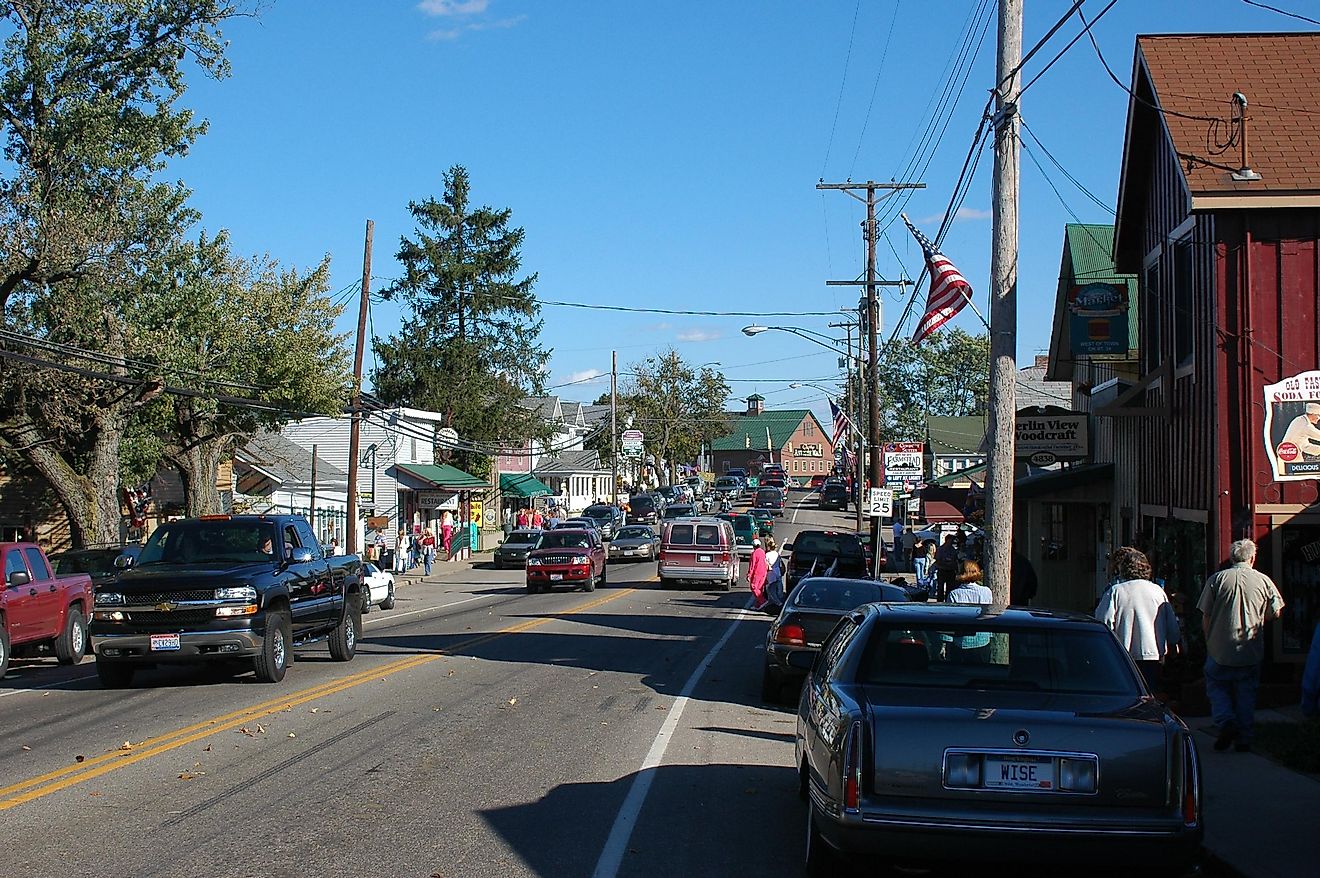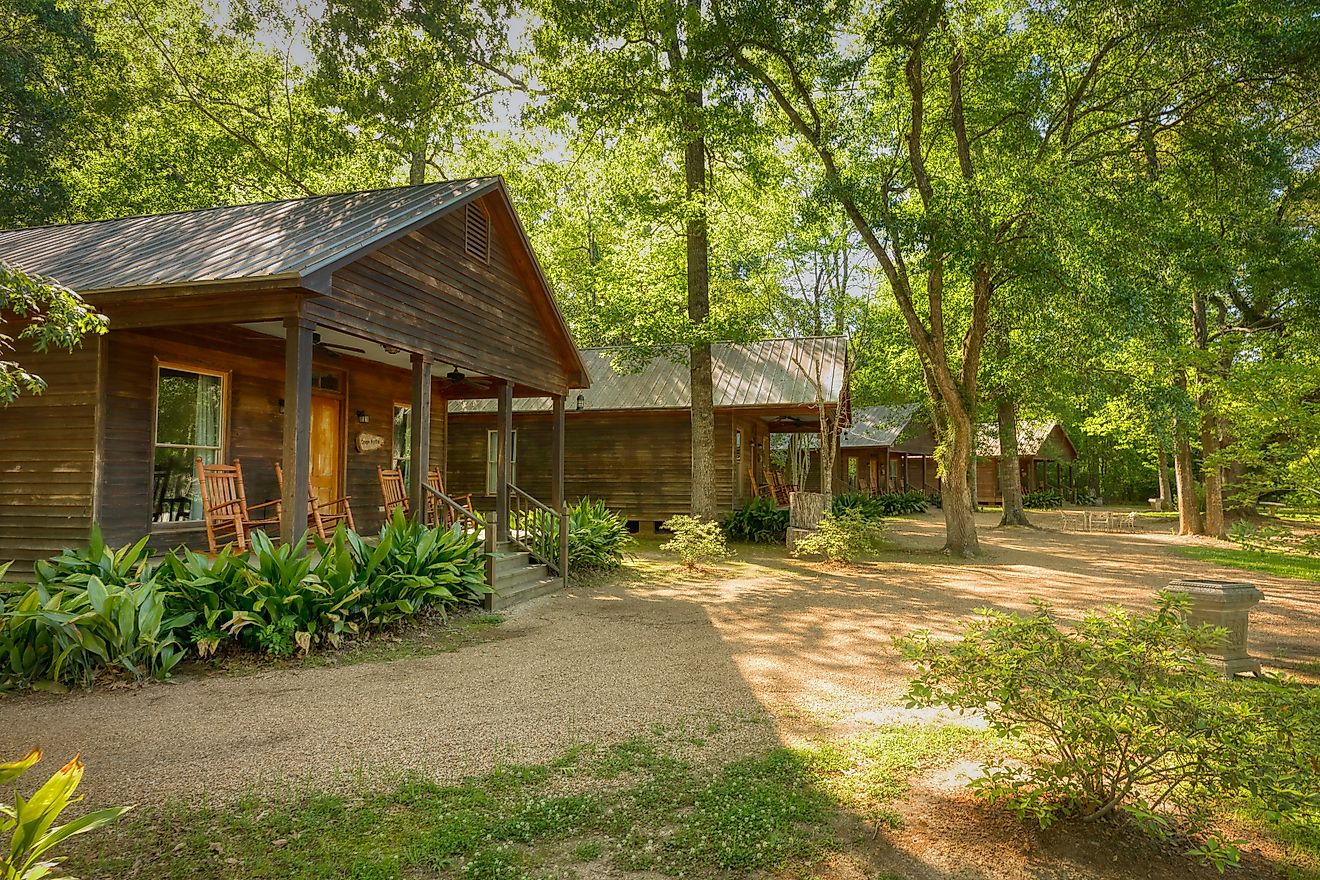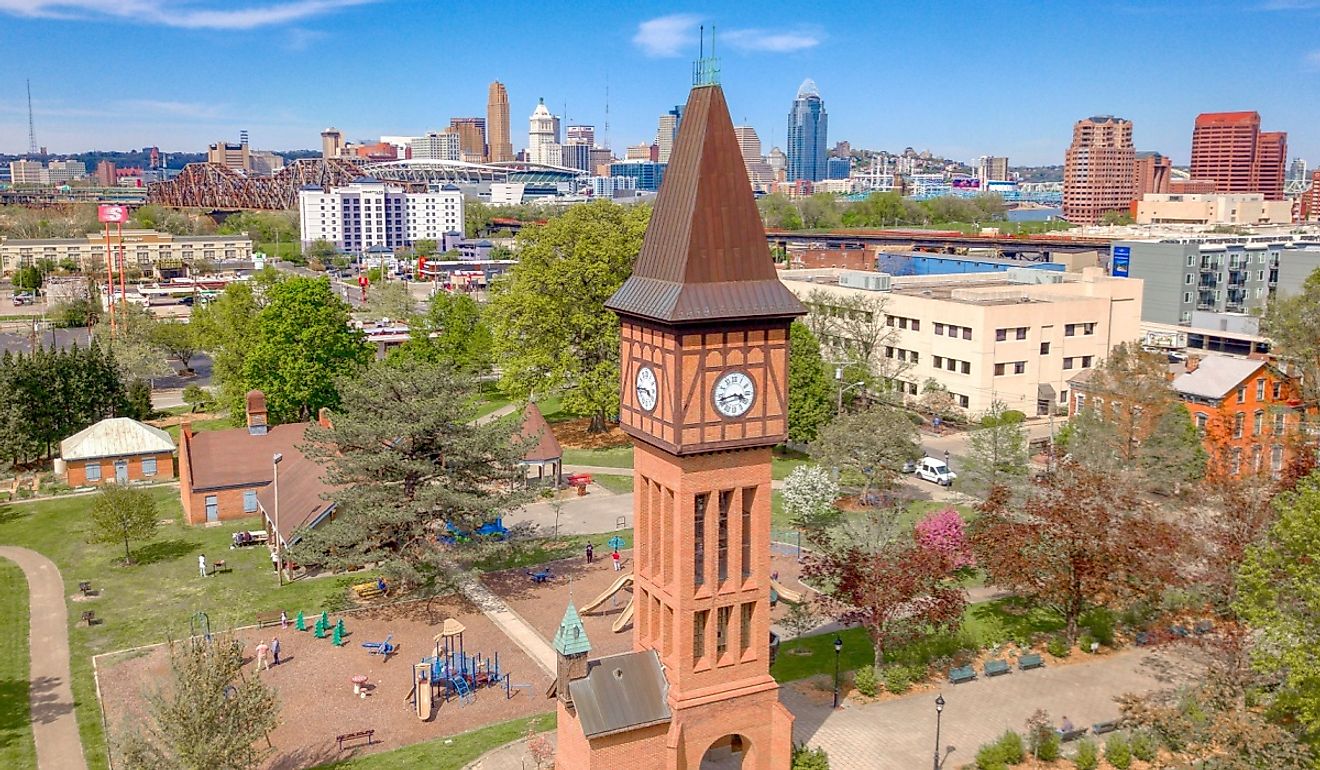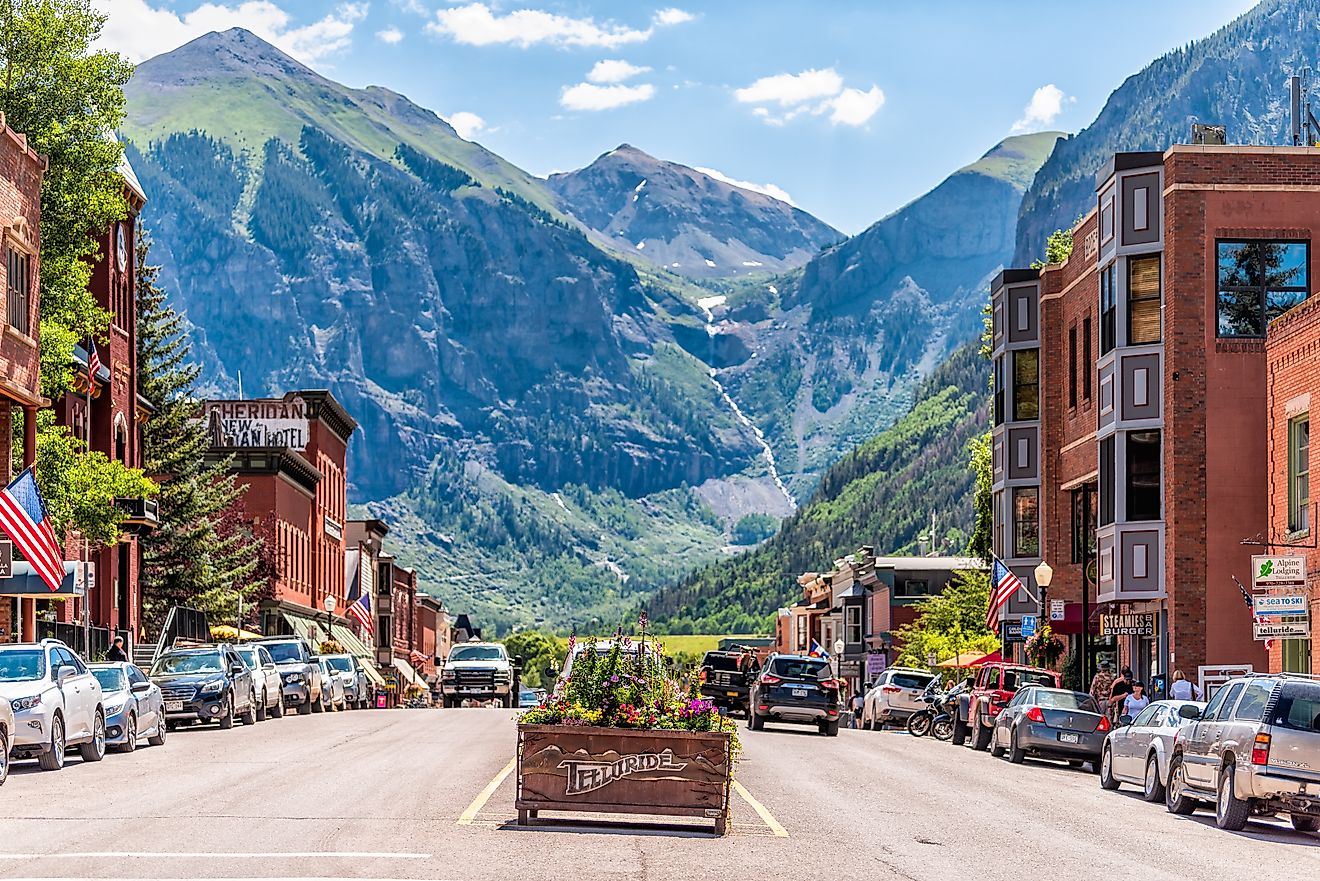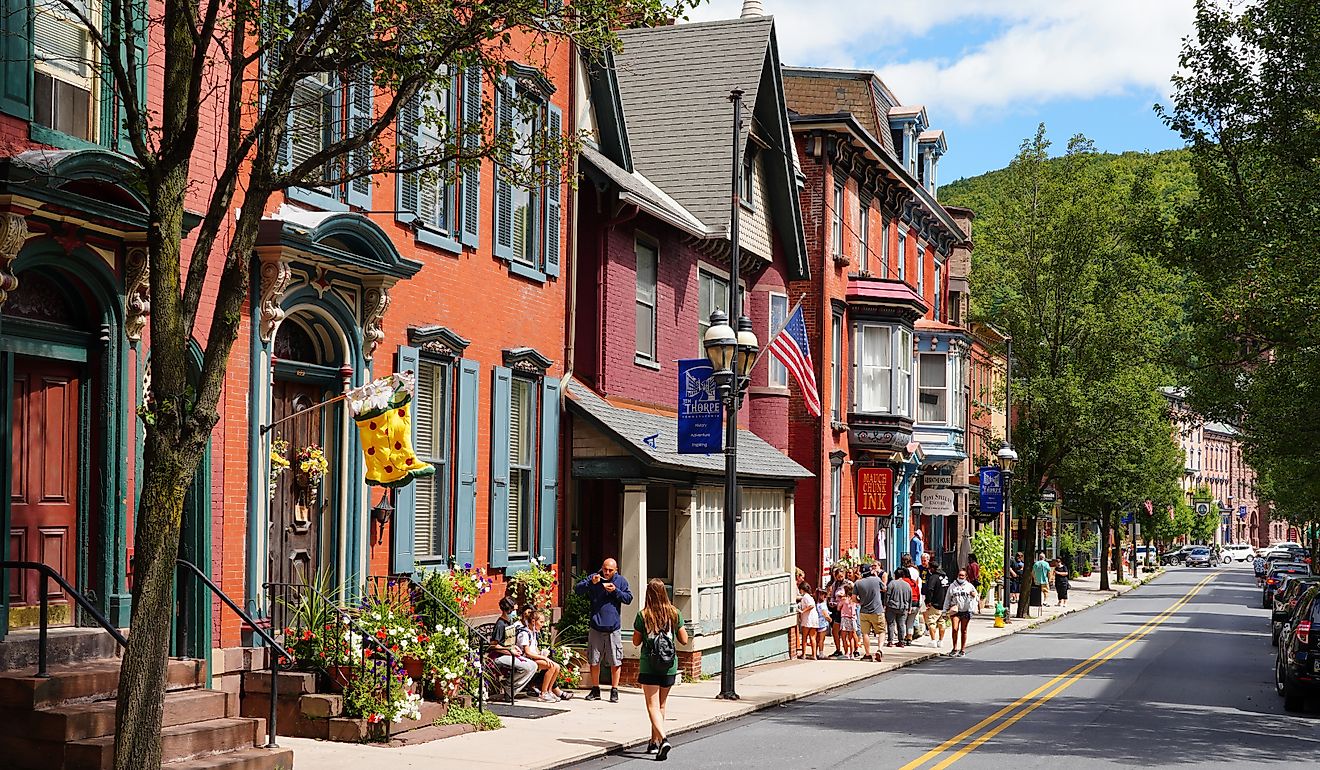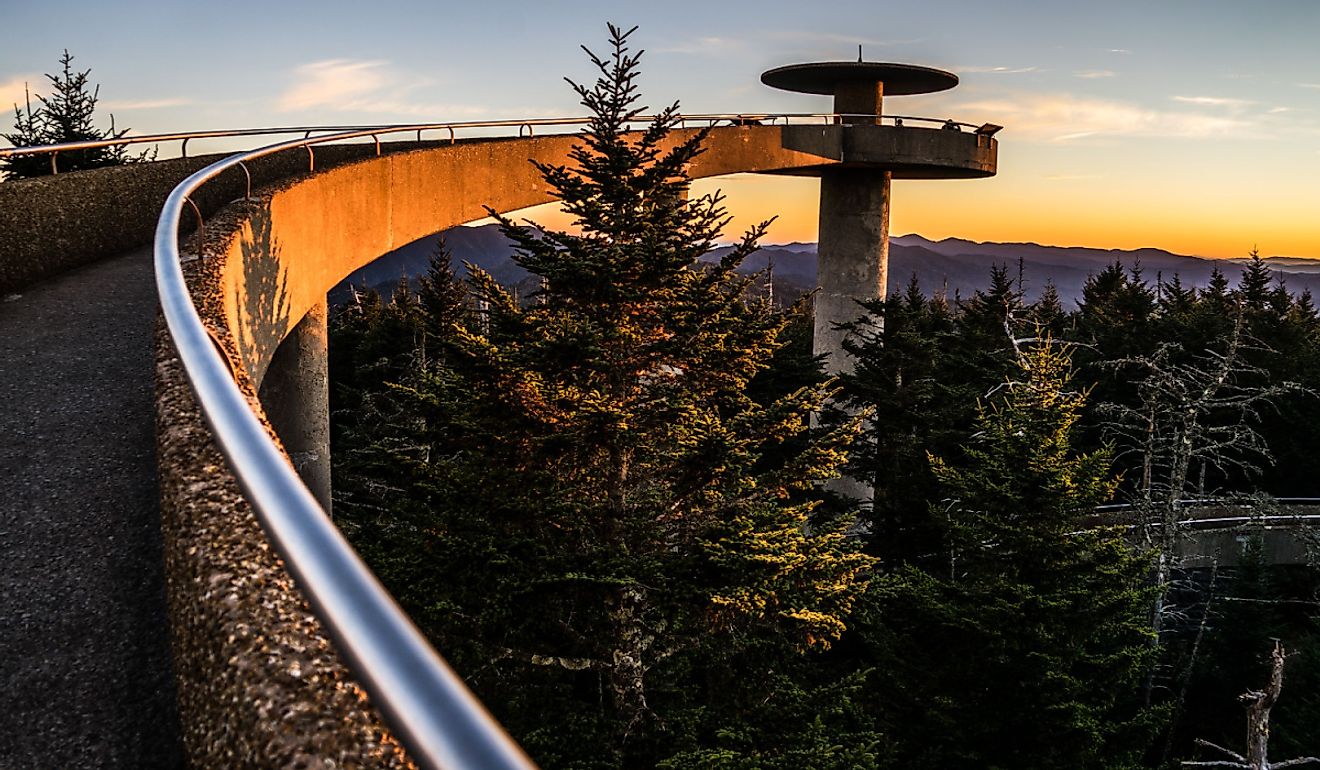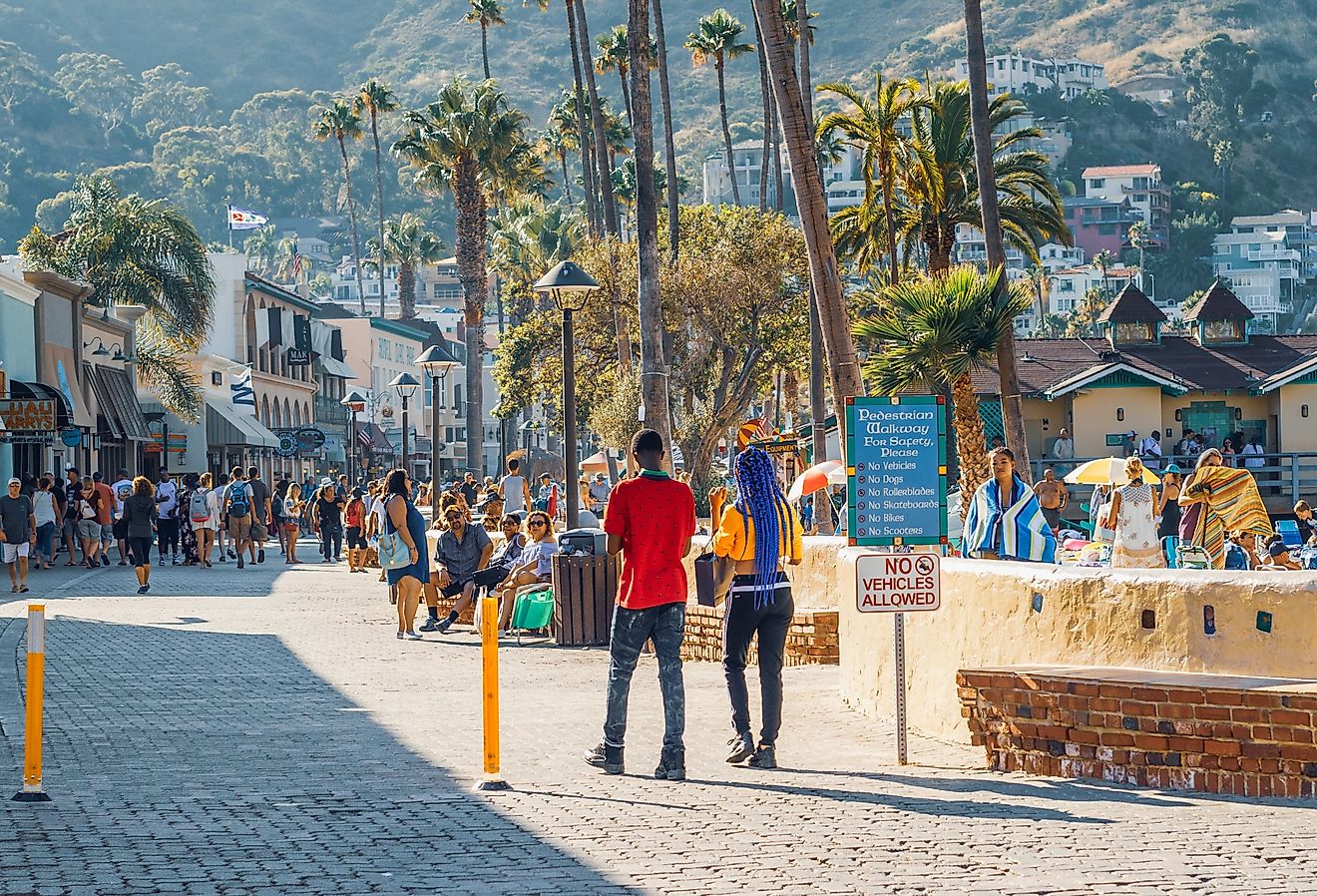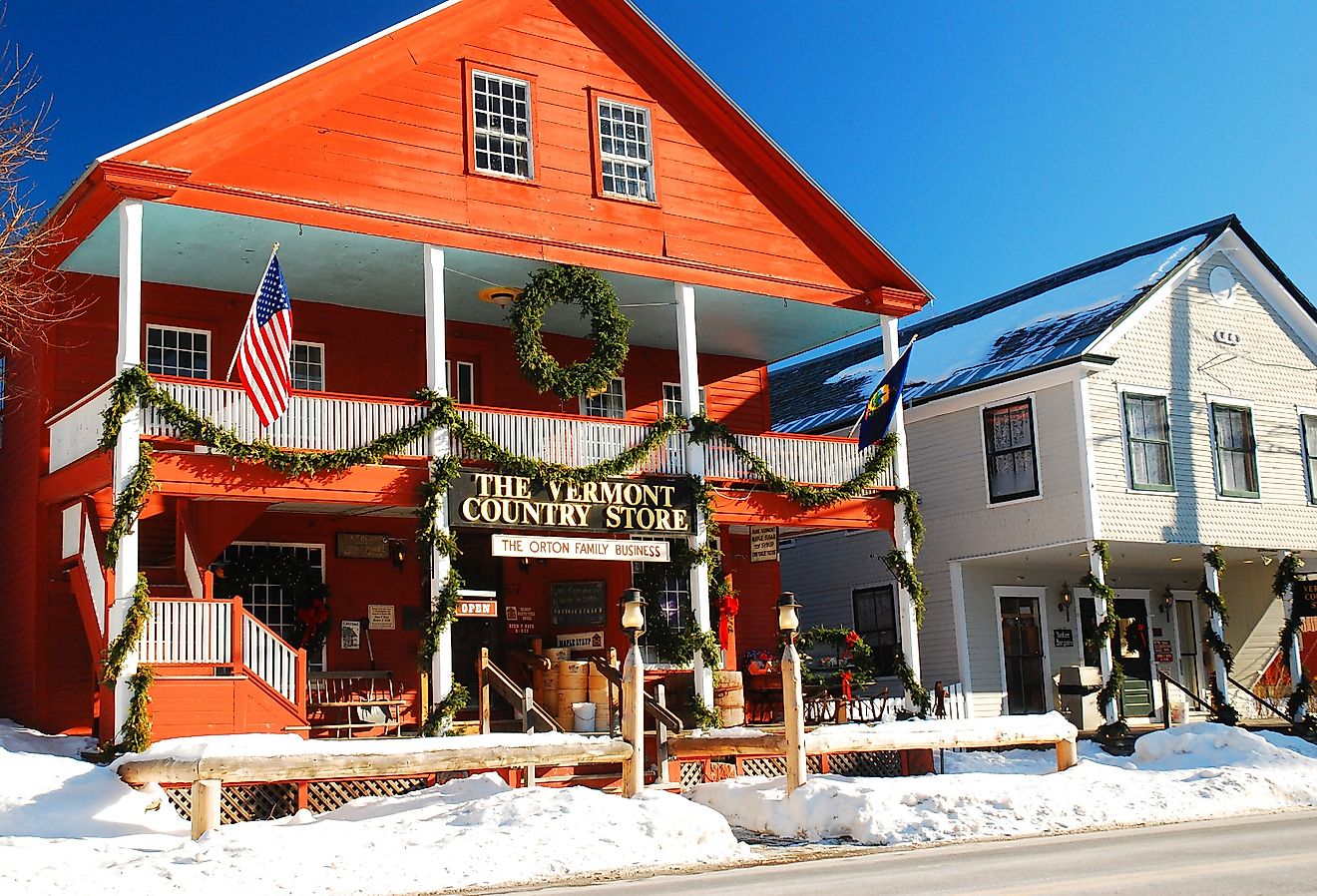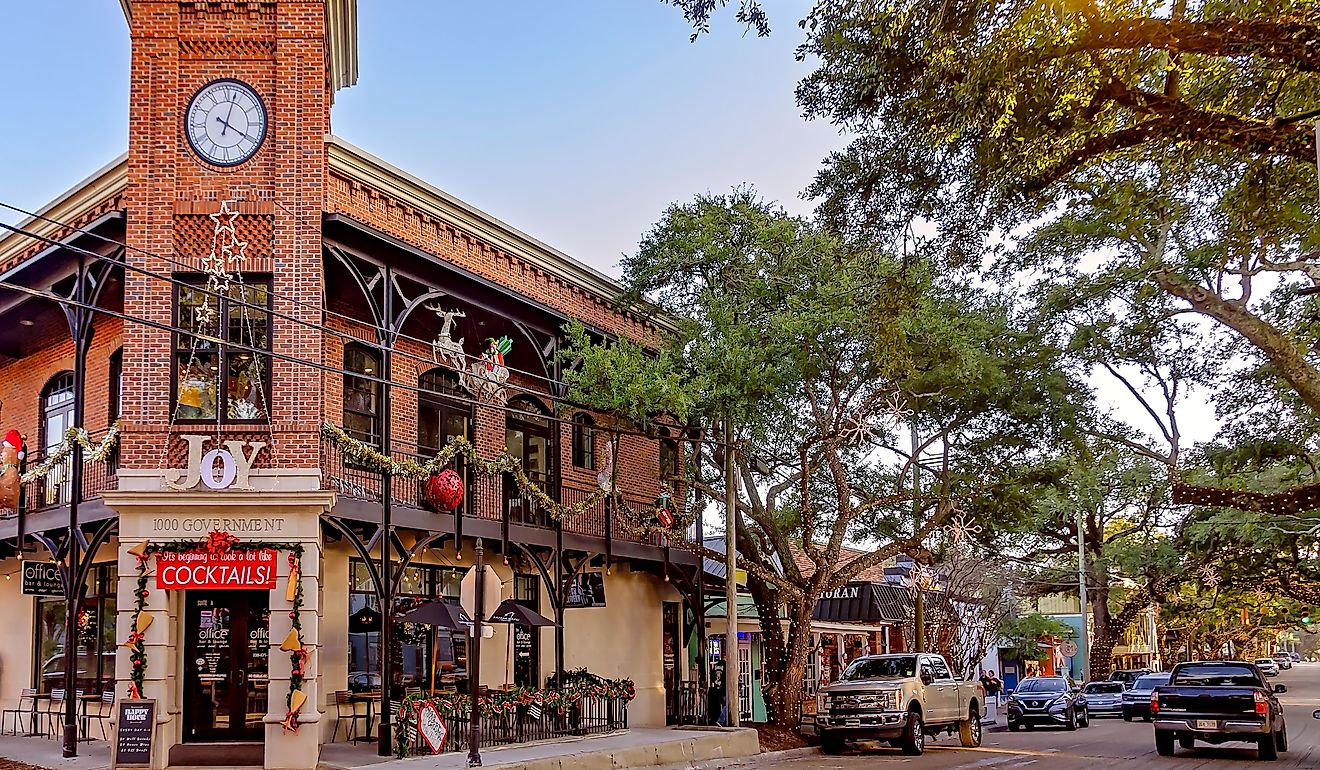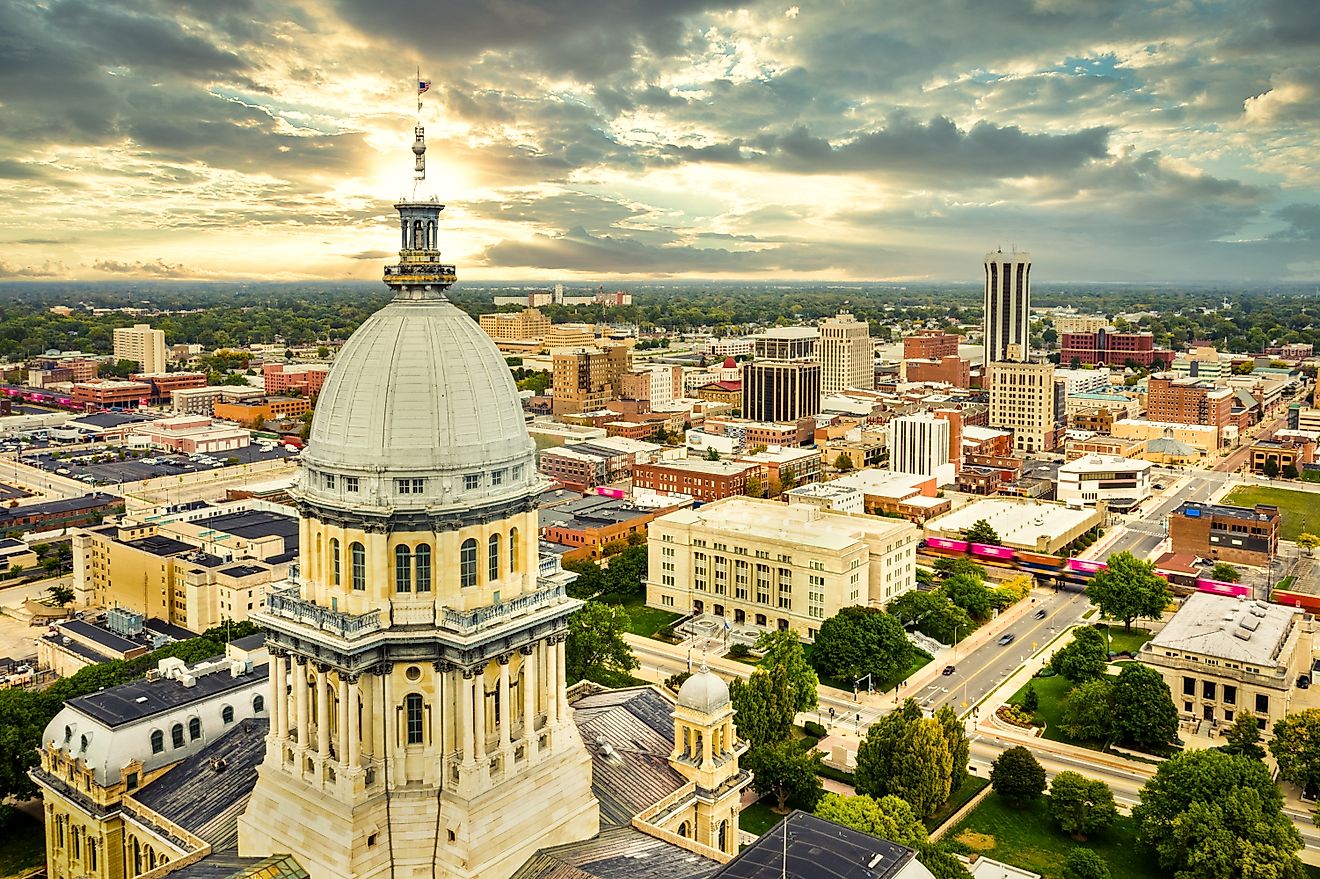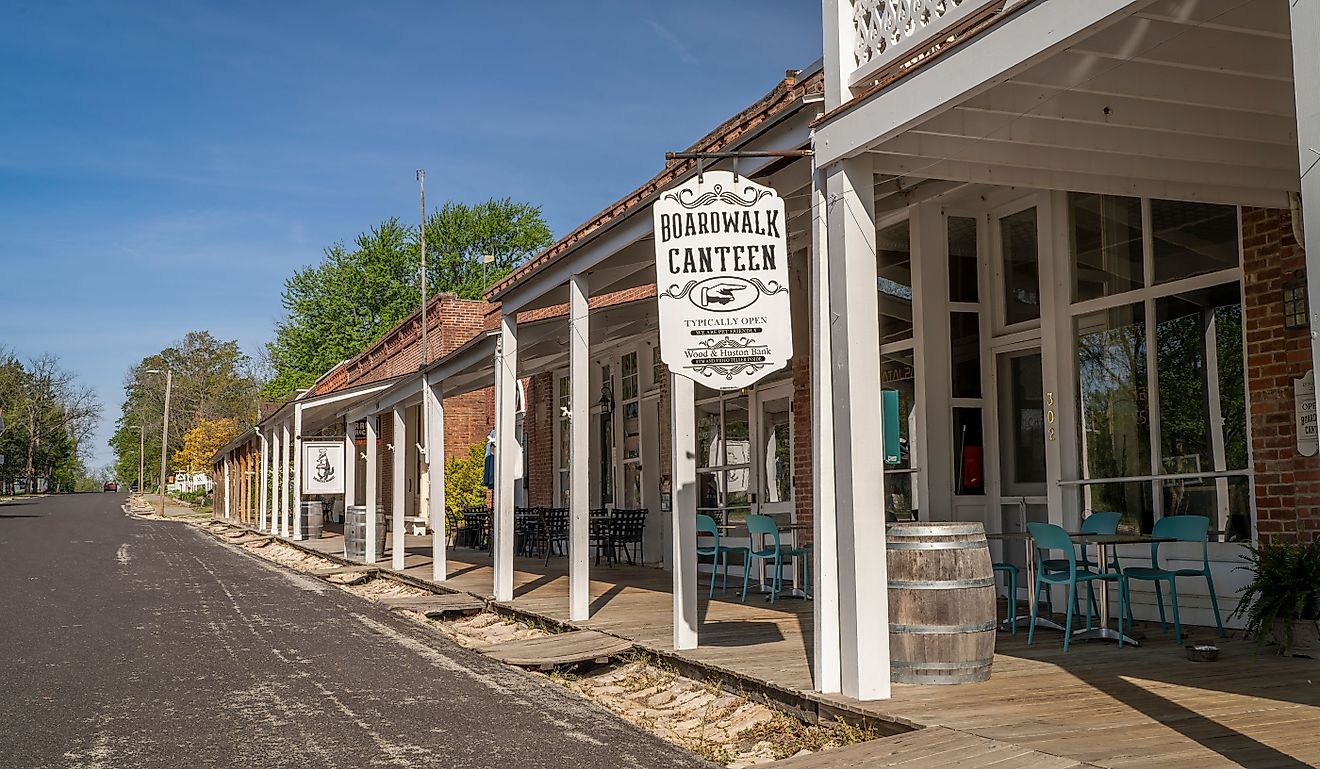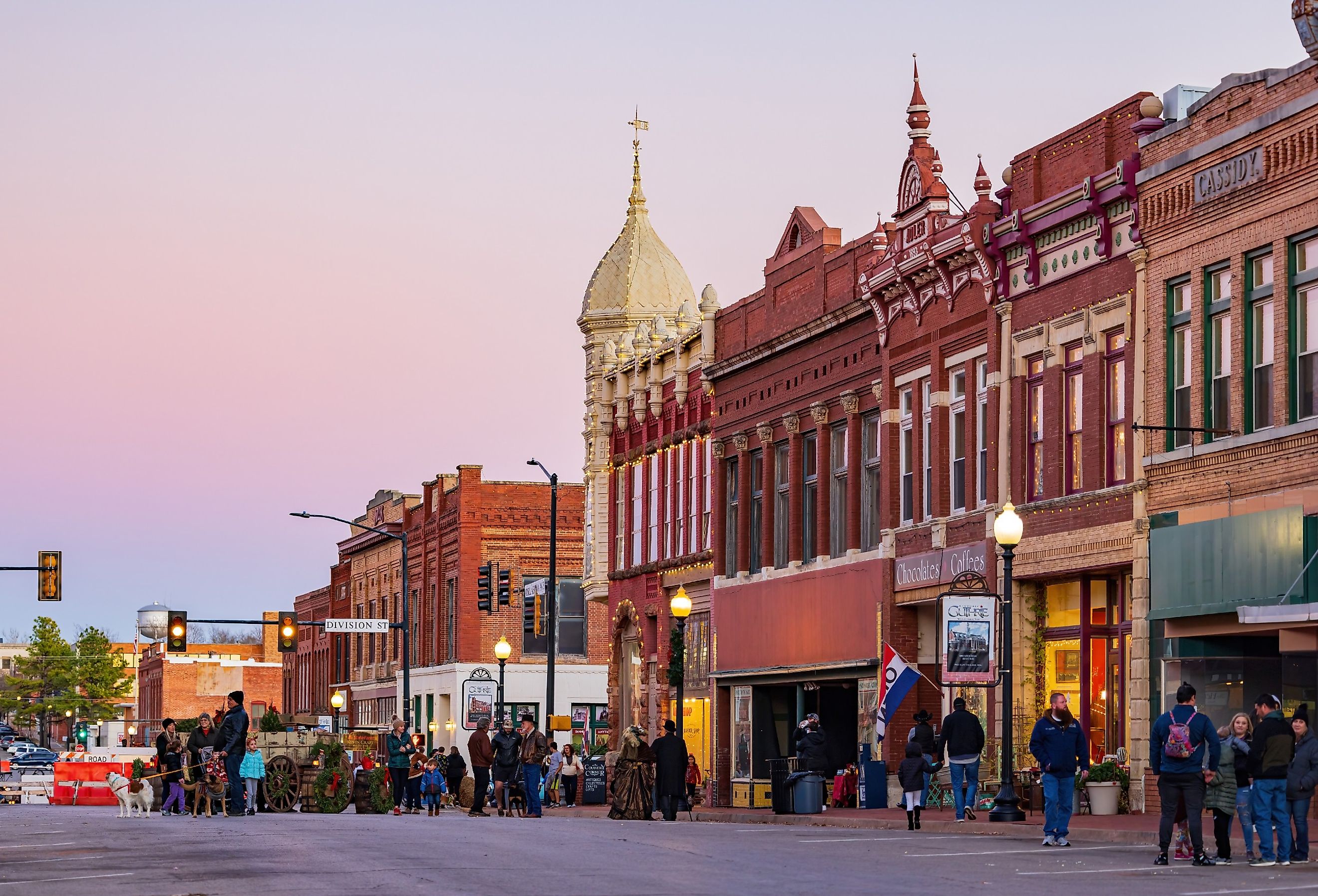
10 Oldest Founded Small Towns to Visit in Oklahoma
Oklahoma is home to many small towns steeped in history. Though established before Oklahoma achieved statehood, these one-of-a-kind destinations were catalysts for the Sooner State’s founding and today showcase its diverse heritage and cultural identity. From frontier forts to oil boom towns and Land Run settlements to railroad hubs, these oldest-founded Oklahoma towns are worth a visit for anyone looking to experience this southern US state.
Fort Gibson
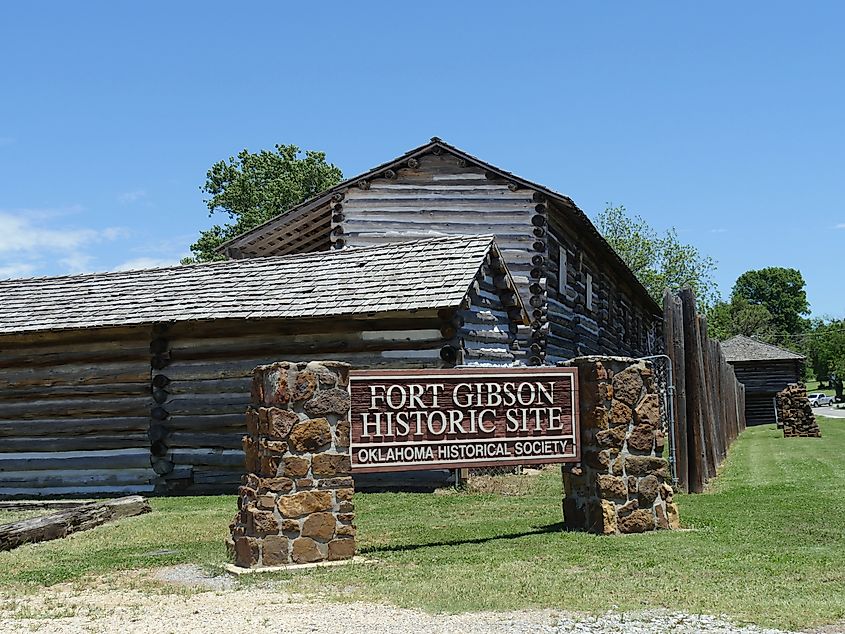
Established in 1824, Fort Gibson is Oklahoma’s oldest town. Originally the site of the eponymous Fort Gibson—the Sooner State’s oldest frontier fort—the historic town was once “the gateway to the west” for military expeditions and frontier exploration. Today, Fort Gibson celebrates its pioneering past with several attractions, most notably, the Fort Gibson Historic Site. Designated a National Historic Landmark, the 80-acre site includes historic buildings, exhibits, and hosts living history events throughout the year. More historic Fort Gibson attractions include the Garrett Home, listed on the National Register of Historic Places, and nearby Fort Gibson National Cemetery, the first National Cemetery in Oklahoma.
In addition to its notable heritage, Fort Gibson visitors can enjoy the area’s picturesque Oklahoma scenery and outdoor recreation at Fort Gibson Lake and Sequoyah State Park, less than 30 minutes away.
El Reno

Established in 1889, El Reno is a vibrant small town in the heart of Oklahoma with plenty of history. Located at the crossroads of Route 66 and the Chisholm Trail less than one hour from Oklahoma City, El Reno is a popular destination for locals and vacationers alike. Once a military fort, Fort Reno, the present-day El Reno began as a railroad town. Today, visitors can explore its railroading past with a visit to the Canadian County Historical Society’s Museum Complex, home to Historic Rock Island Depot and the Heritage Express Trolley, the only rail-based trolley in Oklahoma. Nearby Fort Reno, listed on the National Register of Historic Places, also offers a glimpse into El Reno’s colorful past at its Visitor Center and Museum.
El Reno also has another claim to fame: fried onion hamburgers. A town institution since the Great Depression, the world-famous burgers can be found at many local diners—including Route 66 gem Sid’s Diner—and are celebrated yearly at the El Reno Fried Onion Burger Day Festival, when the town serves up the world’s largest onion burger, weighing over 850 pounds.
Purcell
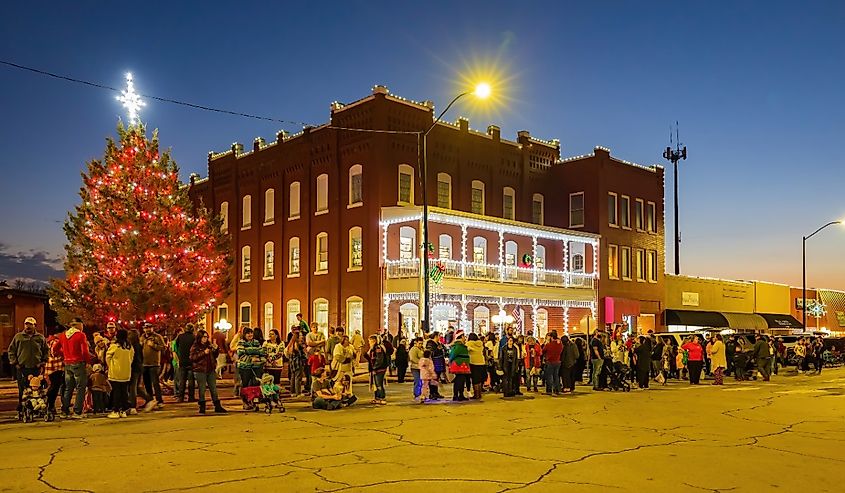
Established in 1887, Purcell began as a permanent settlement for the Chickasaw Indians, garnering it the nickname “The Queen City of the Chickasaw Nation.” Now known as “The Heart of Oklahoma,” Purcell—from its status as an early Indian Territory shipping hub to its boom years as a commercial railroading crossroads—is now a bustling small town that has stayed true to its roots. Learn about Purcell's history at the McClain County Museum, and relive the town’s railroading past with a ride on the Heartland Flyer, a passenger rail service with a stop in Purcell. More Heartland Flyer stops of interest include the Greater Southwest Historical Museum and Lake Murray State Park in Ardmore; the Chisolm Trail Heritage Center and the Foreman Prairie House Historic Site in Duncan; and the Chautauqua Historic District in Norman.
Purcell’s surroundings are also known for breathtaking natural scenery and outdoor activities. Places like Purcell Lake are popular spots for fishing, biking, golfing, and picnicking, while Turner Falls Park and Lake Chickasaw are fun recreational day trips less than an hour from Purcell.
Tahlequah

Located in Northeastern Oklahoma, Tahlequah is the county seat of Cherokee County. Established in 1839 as the capital of the Cherokee Nation, Tahlequah, deriving from the Cherokee word "Ta'ligwu," meaning "just two,” is the oldest municipality in Oklahoma and remains the capital of the Cherokee Nation as well as the capital of The United Keetoowah Band of Cherokee Indians. Today, Tahlequah continues to embrace its rich Cherokee heritage with its Tahlequah Original Historic District and cultural sites like the Tahlequah History Trail, and the Cherokee Cultural Pathway connecting the Cherokee National Historical Museum, the Cherokee National Supreme Court Museum, and the Cherokee National Prison Museum.
The Cherokee County region surrounding Tahlequah is also rich in Cherokee history. Notable sites include Sequoyah’s Cabin Museum, a National Literary landmark exploring the life and times of the famous Cherokee; Honey Springs Battlefield, a National Historic Landmark; and Fort Gibson Historic Site, all one hour or less from Tahlequah. To further experience the area’s culture, history, and natural beauty, explore the Cherokee Hills Scenic Byway, which includes stops like Lake Tenkiller and its two state parks, Tenkiller State Park and Cherokee Landing State Park.
Vinita

Located in scenic Northeast Oklahoma’s Craig County, Vinita is the second oldest town in the Sooner State. Established in 1871, Vinita is part of the Cherokee Nation and honors its rich heritage with its bustling historic district and sites like the Eastern Trails Museum. The nearby Civil War Battle of Cabin Creek site also offers a glimpse into the area’s role in the Civil War.
Vinita also hosts its own pillars of Americana: Will Rogers, the iconic Route 66. Here, the iconic thoroughfare is lined with shops, boutiques, and eateries, including Clanton’s Cafe, one of the oldest restaurants on Route 66, and a Vinita institution since 1930. Meanwhile, Will Rogers, aka “Oklahoma’s Favorite Son,” and legendary vaudeville entertainer, has a distinguished place in local lore, including the Will Rogers Memorial Rodeo and the one-of-a-kind roadside service station and restaurant, the Will Rogers Archway, known locally as “The Glass House.”
Vinita and the surrounding area also have their share of natural beauty. Appreciate epic watersports and scenic vistas at the nearby Grand Lake O' The Cherokees with horseback riding, hiking, and swimming.
Muskogee
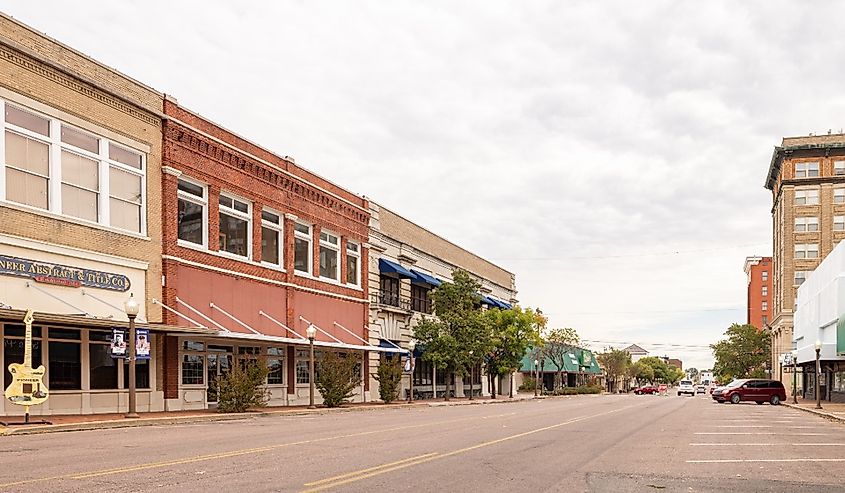
Muskogee was established in 1872 as a railroad hub. However, like many of its small-town Oklahoma neighbors, Muskogee has a heritage rooted in what was once known as Indian Territory and the native peoples who established their homes in the Three Forks Region. Once dubbed the capital of the Indian State, Muskogee honors its place in American history through several attractions, including the Five Civilized Tribes Museum, the Ataloa Lodge Museum, and the Three Rivers Museum.
For more unique attractions, see a WWII submarine at War Memorial Park, experience the town’s vibrant culture at the Muskogee Little Theatre or the historic Roxy Theater, and spend the day at one-of-a-kind destinations like the Castle of Muskogee. Those looking for outdoor recreation will also enjoy Three Forks Harbor, River Country Water Park, the Papilion Gardens and Butterfly House at Honor Heights Park, and a road trip to nearby Lake Eufaula, one of Oklahoma's largest lakes.
Guthrie

Like many of Oklahoma’s oldest towns, Guthrie was established during the Land Run of 1889, the first proclamation opening Unassigned Indian Territory lands to non-Indian settlers. A pivotal event that influenced Oklahoma’s eventual statehood, the Land Run brought thousands of settlers to its open prairie lands, including present-day Guthrie.
Today, the first capital of Oklahoma honors its history through its historic downtown area and notable buildings like the Union Railway Station, the Oklahoma Territorial Museum and Carnegie Library, the Convention Hall at the Guthrie Scottish Rite Masonic Center, and the Gaffney Building, home to The Oklahoma Frontier Drugstore Museum. Additionally, visitors can learn about Guthrie’s rich heritage at the town’s annual ‘89er Days Celebration. Those looking for outdoor activities in Guthrie can enjoy watersports, camping, mountain biking, and horseback riding at Liberty Lake, as well as popular events like Red Brick Nights and Oklahoma’s International Bluegrass Festival.
Ponca City
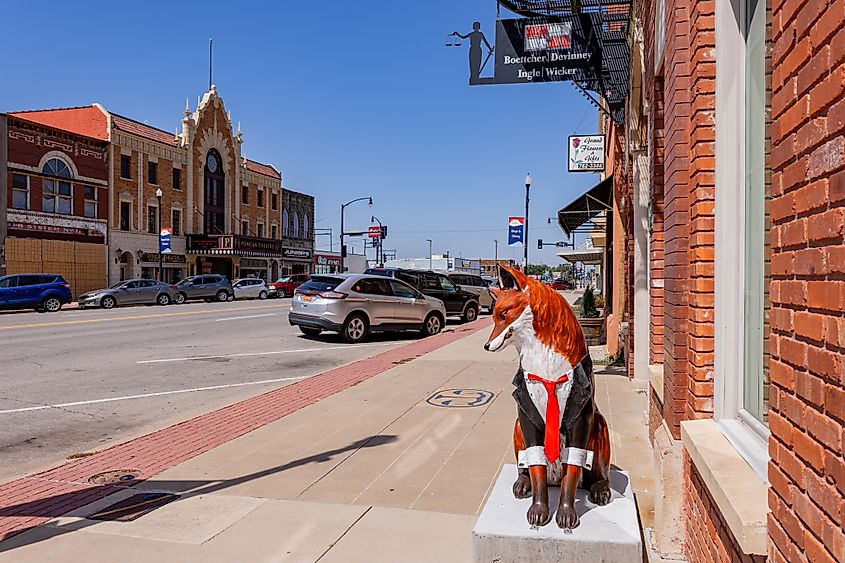
Located in Kay County, Ponca City was founded in 1893 after one of Oklahoma’s largest 19th-century land runs, the Cherokee Outlet Opening. Once known as “New Ponca,” Ponca City rose to prominence first as a rail stop, and later as an oil boom town. Today, the scenic town’s heritage is prominently displayed through many historic sites, including The EW Marland Mansion and Estate, former home of famed Ponca City oil baron/Oklahoma governor EW Garland; the Pioneer Woman Statue and Museum, celebrating the contributions of women to Oklahoma history; and the Standing Bear Native American Park, Museum and Education Center which honors Native American history through artifacts, exhibits, and a larger-than-life bronze statue of Ponca Chief Standing Bear.
More notable buildings in Ponca City include City Hall/Centennial Plaza, the Poncan Theatre, the Ponca City Library, and the Ponca City Milling Company Elevator, all of which are listed on the National Register of Historic Places.
Atoka
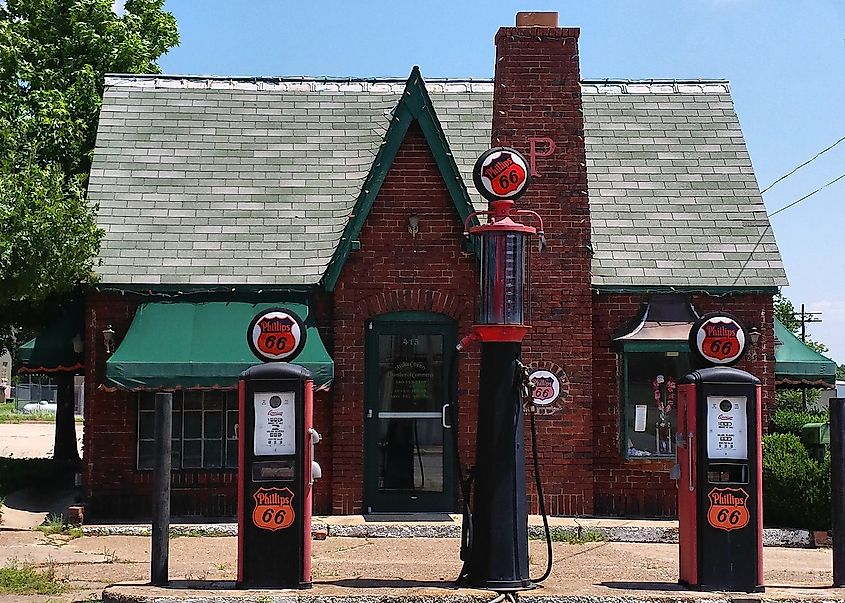
Founded in the 1850s by Choctaw Indians, Atoka’s diverse background includes stints as a Choctaw Indian Mission, a railroad hub, a timber town, and a cattle ranching community. Today, the picturesque Atoka County town is known for its outdoor recreation. Popular spots like the McGee Creek State Park and the McGee Creek Wildlife Management Area offer watersports, camping, hunting, hiking, and fishing. At the same time, nearby Atoka Lake is the perfect place to bask in the area’s scenic landscapes. Historic Boggy Depot Park, listed on the National Register of Historic Places, is another recreation area perfect for enjoying Atoka’s natural beauty.
To soak up some of Atoka’s history, visit the Atoka Museum and Civil War Cemetery. Home to the state’s only designated Civil War Confederate Cemetery, the museum hosts historical exhibits tracing Southeastern Oklahoma history. The museum also honors hometown talents like famous bull rider Lane Frost and country music star Reba McEntire. While visiting, fans can also visit the famous singer’s entertainment venue/restaurant, Reba’s Place.
Cushing

Located in Oklahoma’s Payne County, Cushing began its history with the Oklahoma Land Run of 1891. Named after Marshall Cushing, private secretary to the US Postmaster General, Cushing got its start as an agricultural hub before an early 20th-century oil boom brought an influx of settlers to the area. Today, that legacy remains, as Cushing is still known as the "Pipeline Crossroads of the World” because of its oil pipelines and storage facilities.
However, the once-booming oil town is now known for its diverse attractions as well as its mining legacy. The Oklahoma Skydiving Center—home to the state's largest skydiving school—is perfect for adventure-seekers looking for a bird-eye view of the Cimarron Valley. At the same time, nearby Cushing Lake is known for its spectacular fishing and wildlife watching. For more Cushing fun, visit popular attractions like The Cushing Aquatic Center, the Cushing Community Theatre, and the Sundown Drive-In Mural; or take a road trip to the Seaba Station Motorcycle Museum in Warwick and the Route 66 Interpretative Center in nearby Chandler, less than 30 minutes away.
Oklahoma’s oldest-founded towns are an important part of the Sooner State’s diverse historical and cultural tapestry. Whether it is the state’s first capital (Guthrie) or its second oldest city (Vinita), its Land Run communities, or its Cherokee Nation cornerstones, these historic small towns highlight the best of Oklahoma. From Native American beginnings to bustling pioneer days, from boom to bust (and back again), these present-day destinations offer a unique glimpse into the Sooner State’s past, present, and future.
